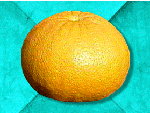According to legend, a gallant Spanish knight returning from the Crusades in the 11th Century, brought a gift of great value for his beloved. But to her dismay, instead of receiving a costly treasure, she was given an orange. After overcoming her shock, the lady ate the orange and planted the seed, which brought Seville oranges to Europe
Plant Details
Description: Seville oranges are slightly flattened in appearance and bitter to taste. The tree is cold tolerant and more attractive than a normal orange tree with larger, darker, glossy, green leaves. It also has a very fragrant bloom.
Climate map:
Care: Seville oranges need a lot of feeding. They require frequent watering, and good mulch. If the leaves are pale, narrow or drooping they need fertilising.
Tip: Oranges such as Navels are much sweeter to eat, but Sevilles are superior for cooking as they have a more intense orange flavour. If recipes such as Crepe Suzette or Orange marmalade lack a strong orange flavour, they have probably been made with sweet oranges and will taste much better with Sevilles.
For a tasty medieval treat try sprinkling Seville orange halves with some sugar and a splash of rum or gin and then grill. The results are fragrant and delicious enough to satisfy even a naughty knight.
Availability: Seville oranges will be hard to obtain, so ask your local nursery to order one in for you from one of the major citrus plant growers.
Further information
For further reading on Seville oranges see the article by Jackie French in the September 1998 issue of the Burke’s Backyard magazine, pages 114-116. For more of Jackie French’s ideas consult her new book Making Money from your Garden (Earth Garden Magazine, 1997, rrp $9.95). Available from book stores and newsagencies throughout Australia.



